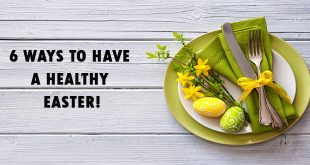Labels on store-bought herbs rarely reveal how plants are raised, let alone how long the ingredients are exposed to light and high temperatures while stored in their plastic containers. Grow your own to ensure the best quality and potency of your herbal remedies!
“The primary benefit is being able to develop a relationship with that herb,” says Jen Bredesen, an herbalist and teacher at the California School of Herbal Studies. Even novice gardeners can concoct simple home remedies like teas and salves using Bredesen’s list of the top nine easy-to-grow medicinal herbs.
Calendula (Calendula officinalis)

Calendula is also known as pot marigold. It’s a centuries-old antifungal, antiseptic, wound-healing ally, according to the National Library of Medicine. The petals of these cheerful yellow and orange daisy-like flowers lend skin-soothing properties to many natural cosmetics and diaper creams.
Calendula is a freely reseeding annual that blooms all season long. It makes a lovely addition to gardens with full sun. Harvest the petals fresh. You can also dry entire blooms — which close in the evening — before they form seeds.
Cilantro (Coriandrum sativum)

Cilantro boasts a unique flavor people either love or hate. The leaves often garnish Mexican and Thai dishes. The seeds, known as coriander, are a prime ingredient in Indian curries.
Few think of this plant as a medicinal herb, but studies show it’s a powerful digestive aid and may be capable of removing heavy metals and other toxic agents from the body.
Cilantro grows best in a cool, moist garden and will quickly bolt in hot weather. Look for slow bolt varieties from seed companies.
Lemon Balm (Melissa officinalis)

The oils, tannins, and bitters in lemon balm’s fragrant leaves and flowers have a relaxing antispasmodic effect on the stomach and nervous system. It may help fight off viruses like herpes simplex when used topically, according to theNYU Langone Medical Center(NYULMC).
Lemon balm is tasty and gentle enough for children when prepared in teas or tinctures with a glycerin base.
This calming and uplifting perennial makes a pretty patch of bright green in the garden and is a great plant to grow fresh. The dried herb loses some potency after six months.
Rosemary (Rosmarinus officinalis)

Rosemary is the great reviver. This perennial woody herb stimulates energy and optimism and sharpens memory and concentration by bringing more oxygen to your brain, according to Georgetown University Medical Center. It’s a wonderfully stimulating alternative to caffeine when you need that second wind.
A row of these long-lived and drought-tolerant plants makes a beautiful, bee-friendly evergreen hedge. You may only need one plant in your garden — a little goes a long way.
German Chamomile (Matricaria recutita)

Delicate, apple-scented chamomile demonstrates that mild doesn’t mean ineffective. It’s primarily grown for its small, yellow-bellied flowers.
The NCCIH reports that chamomile is one of the best herbs for treating colic, nervous stress, infections, and stomach disorders in children. In fact, it was chamomile tea that Peter Rabbit’s mother fixed for him after his stressful chase in Mr. McGregor’s garden!
Herbal Garden Allies

These easy-to-grow herbs bring health benefits to your garden as well as your family. Many attract beneficial insects, including bees. They can also help repel harmful pests from more sensitive plants nearby.
Be sure to choose plants that suit the light, water, and temperature conditions of your garden. For example, rosemary, lavender, and mullein are best for warm, dry spots in full sun. Cilantro and mint prefer rich, moist areas with shade.
Reference:
http://www.healthline.com/
 Parsi Teb Physical and Mental Health Journal
Parsi Teb Physical and Mental Health Journal 



